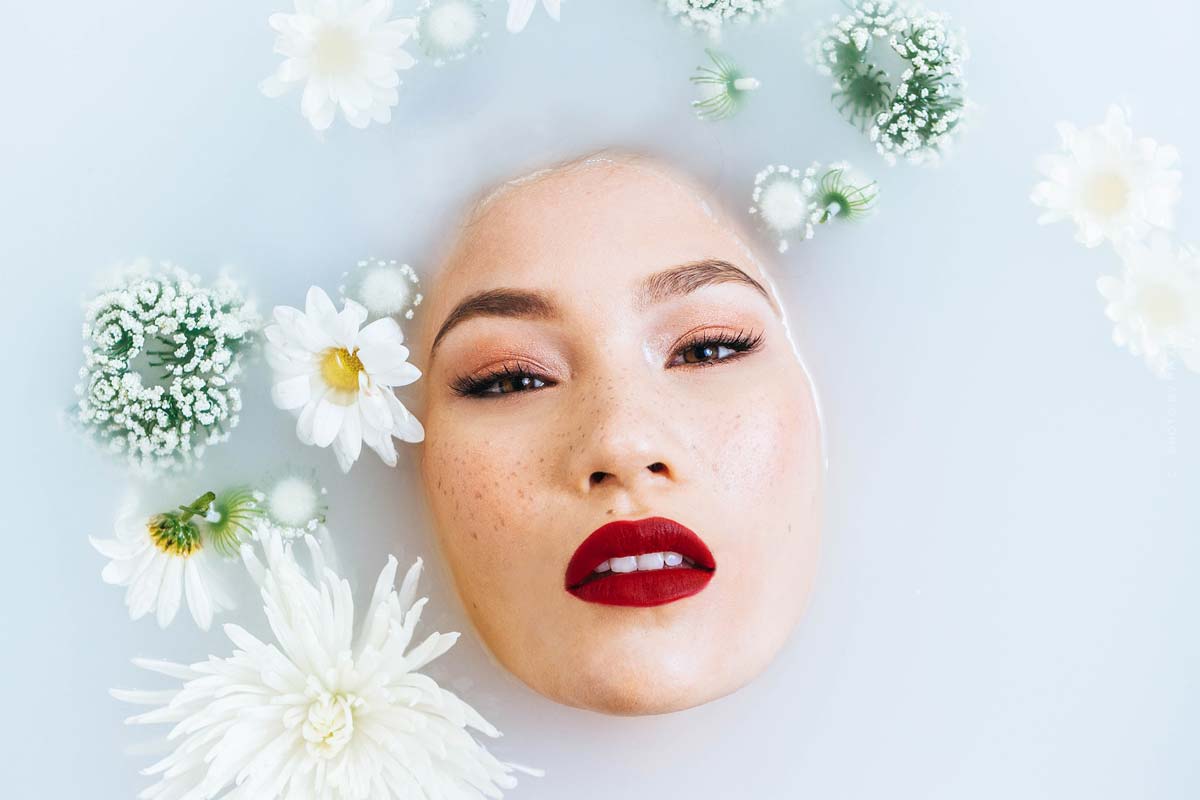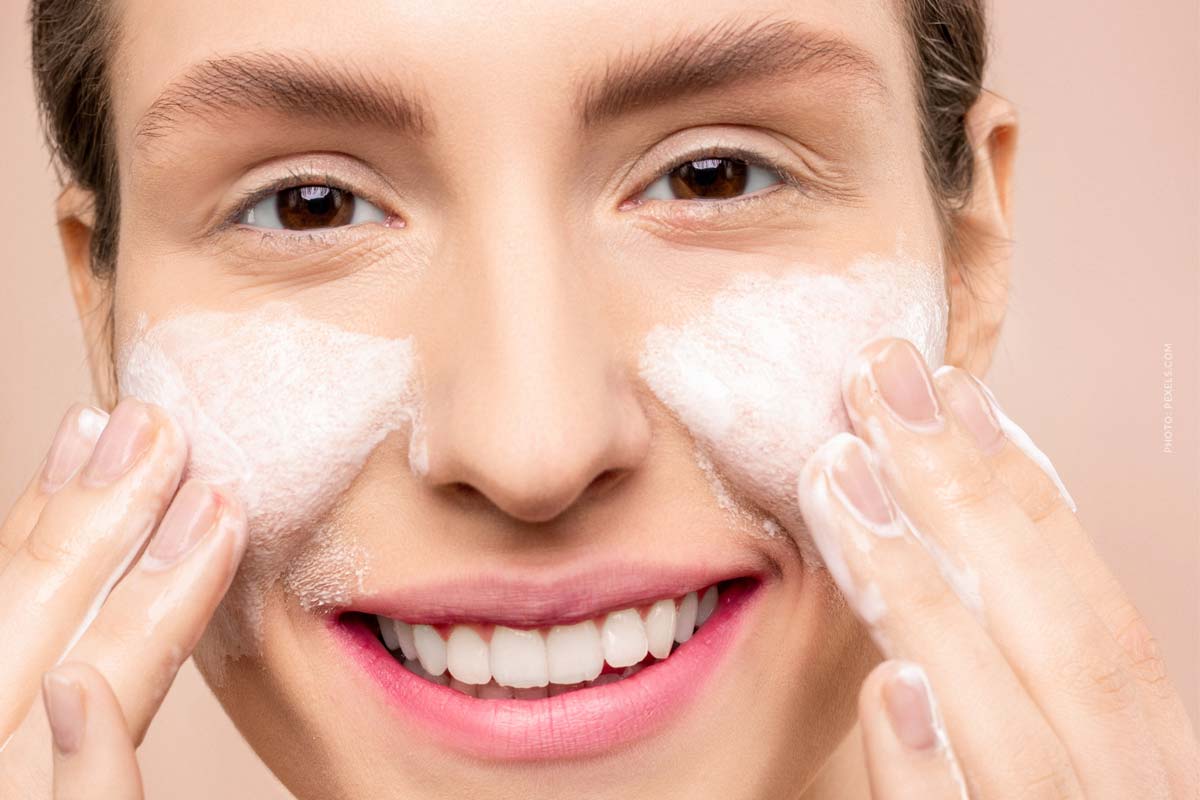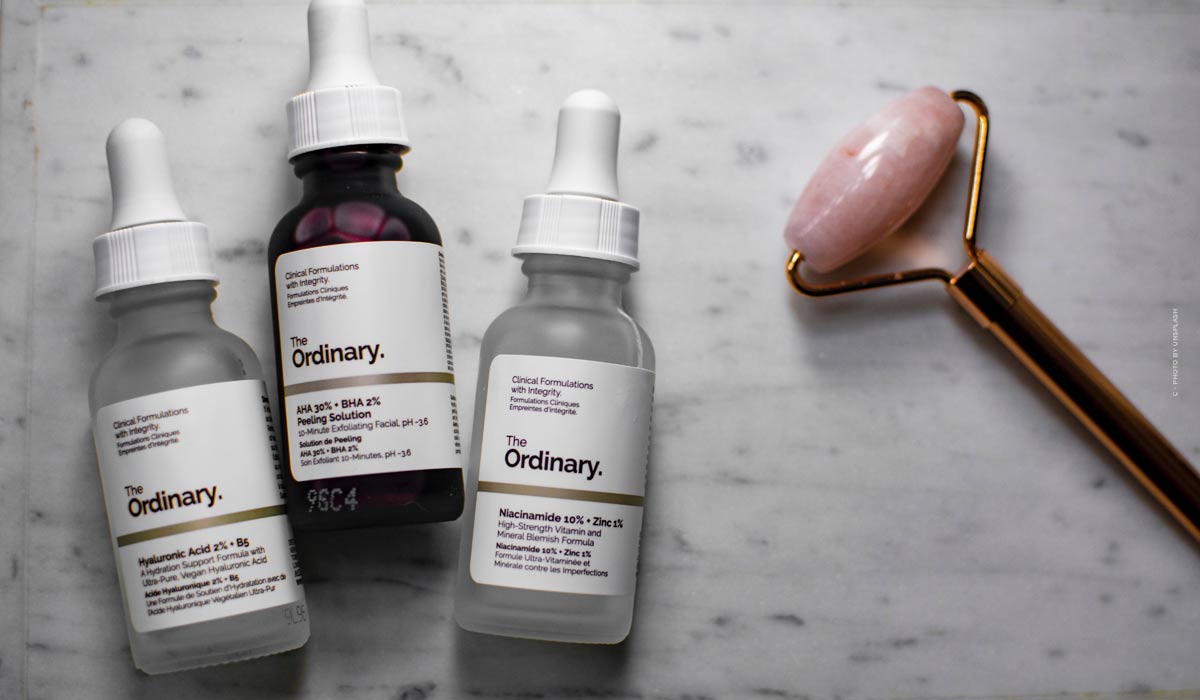The right skin care: face cream, serum, toner & co. – tips for your skin type
The right skin care – radiant skin, velvety and soft as if kissed by the sun. Who doesn’t want that? Instead, most of us are plagued by stubborn blackheads, recurring pimples or the first wrinkles around the eyes, mouth & Co. Yet the right facial care can not be so difficult, right? To find the right products, it’s important to know your skin type. Find out here how to identify your skin type and which ingredients you should look out for.
The 1×1 of facial care: , Toner Serum, Cream & Co.
The right facial care is neglected by many. Serum, cream & Co. not only help you to keep your skin clean, but also to prevent wrinkles and later signs of aging. After thoroughly cleansing your face, you should also make sure to use a toner and serum. A suitable eye care after the cream is also important and is often forgotten by many.
Here is an overview of the most important steps:
- Step: Thorough cleaning
- Step: Facial Toner / Toner
- Step: Serum
- Step: Day or night cream
- Step: Eye care
Each of these products differs in its ingredients. Depending on your skin type, your skin may be velvety and soft, or sensitive with dry patches and blackheads. Therefore, it is not only advisable to know your skin type well, but also to reach for the appropriate products. You can find a variety of creams and serums in drugstores or online, like at asambeauty. But what distinguishes serums from creams? And why is a toner so important? Find out here!
Facial Toner & Toner: Neutralize PH value
Once you have thoroughly cleansed your face of sebum, make-up, sun cream and sweat, the first step is to apply the toner or facial toner. This is important to neutralize the PH value of your skin. After exfoliation, cleansing milk and soap, your skin’s pH can get out of balance. This is the perfect way to prepare your skin for the next step in your skincare routine.
Serum: Ideal complement to the day and night cream!
Another step that many neglect: The serum! This is highly concentrated and contains all the important ingredients your skin needs. When should you use a serum? It’s best to use serums before your day or night cream. If the cream layer is too thick, the important ingredients of your serum cannot be absorbed into your skin. What’s more, applying the serum before your cream can actually enhance the positive effect of your cream! You probably also ask yourself the question: How do I choose the right serum for my skin? This differs according to skin type. More about that in a moment.
Day and night cream: Perfect alternative to facial oil
Next comes the classic: the cream. While you should use a light cream during the day that absorbs quickly, we recommend that you use a heavier cream in the evening. Alternatively, you can also use a face oil or a face mask that absorbs at night. The optional last step is: The eye cream.
Skin types: Facial care with the right ingredients
A total of four skin types are distinguished: Normal skin, combination skin, dry skin and oily skin. Each skin type has very different needs. Therefore, it is important to know your skin type. Depending on your skin type, your facial care will differ. The easiest way to identify your skin type is to cleanse your face. Once make-up, sebum & co. have been thoroughly removed, you can do without cream and serum for the time being and wait. After 30 minutes, it’s time:
How’s your skin?
You can recognize your skin type by these characteristics:
- Normal skin: fine pores, rosy, fine blood circulation and soft
- Oily skin: large pores, greasy, oily and blemishes.
- Dry skin: feeling of tension, redness, flaky patches and small wrinkles
- Combination skin: Eyes and cheek area tense & redden, T-zone is shiny and oily
Once you’ve determined your skin type, it’s time to get to grips with the right skincare regimen.
Normal Skin: Jojoba Oil, Vitamin E & Shea Butter
Normal skin has fine pores and is smooth. This is because, unlike the other skin types, the sebum supply is balanced and does exactly what it is supposed to do: Perfectly balance the moisture content of your skin depending on the season and circumstances. Compared to dry and oily skin, you’ll find your face care routine far easier with this skin type. Our pro tip: Seasonal facial care. So moisturise your skin in autumn and winter and exfoliate in summer to remove dead skin cells and excess sebum.
Tip: Seasonal skin care!
If you have normal skin, your skincare routine should include the following ingredients:
- Ceramide
- Jojoba oil
- vitamin E
- vitamin C
- Shea butter
Oily skin: fruit acid, glycerin & panthenol
Oily skin is often caused by overactive sebum production. All that sebum clogs your pores. The result is large pores, blackheads, pimples and blemishes. The causes of increased sebum production vary: genetic predisposition, an unbalanced diet, stress or genetic predisposition.
If you have oily and blemished skin, a proper cleansing is essential for you!
When it comes to the ingredients of your skincare, you should therefore make sure that your pores are freed from excess sebum. Instead, the horny layer of your skin should be supported in its natural moisture retention. We advise you to use the following ingredients:
- Fruit acids
- aloe vera
- Urea
- Glycerin
- Panthenol
Dry skin: gamma-linolenic acid, natural oils and aloe vera
The complete opposite of oily skin is dry skin. This suffers from a lack of moisture. Either too little sebum is produced, or moisture is not properly absorbed and stored. The consequences: Your skin tightens and flakes. This is especially noticeable during the cold season.
Our tip: Give your skin an extra portion of care!
Therefore, an extra portion of love and care are extremely important for dry skin! We advise you to pay attention to the following ingredients in your facial care:
- Urea
- Gamma-linolenic acid
- Natural oils obtained from almonds, olives and soybeans
- aloe vera
Combination Skin: Omega-6 fatty acid, urea & fruit acid
The most demanding skin care here is the combination skin. While the T-zone (from the forehead over the nose to the chin) tends to produce too much sebum, the cheeks and eyes tend to be too dry. Our tip: Use different skin care products for different parts of the face.
With combination skin, the T-zone is too oily. Cheeks & eye area, however, too dry.
So if you have combination skin, you should reach for the right ingredients for oily skin as well as for dry skin:
- Urea
- omega-6 fatty acid
- Gamma-linolenic acid
- Oils from almonds, olives and soybeans
- aloe vera
- Fruit acid











